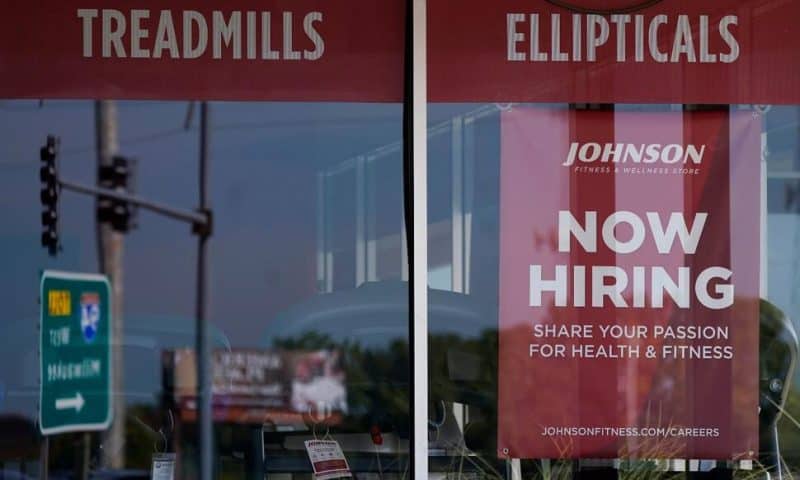The number of Americans applying for unemployment benefits fell last week and remains historically low even as the U.S. economy slows in the midst of decades-high inflation.
WASHINGTON — The number of Americans applying for unemployment benefits fell last week and remains historically low even as the U.S. economy slows in the midst of decades-high inflation.
Jobless claims for the week ending Oct. 15 declined by 12,000 to 214,000 from 226,000 last week, the Labor Department reported Thursday.
The four-week moving average rose by 1,250 to 212,250.
Considered a proxy for layoffs, applications for jobless aid have remained historically low since the initial purge of more than 20 million jobs at the start of the coronavirus pandemic in the spring of 2020.
Some recent employment data suggests the job market may be cooling slightly, but overall, it remains the healthiest part of an economy that’s been shaky all year due to high inflation and Russia’s war in Ukraine.
The government reported last week that inflation in the United States accelerated in September, with the cost of housing and other necessities intensifying pressure on families and businesses.
Four-decade high inflation has prompted the Federal Reserve to keep raising its key interest rate, which is currently in a range of 3% to 3.25%. A little more than six months ago, that rate was near zero. The sharp rate hikes have pushed mortgage rates up to 15-year highs, and made other borrowing costlier. The Fed hopes that higher interest rates will slow borrowing and spending and push inflation closer to its traditional 2% target.
Fed officials have warned that the unemployment rate will likely have to rise as part of their fight against rising prices, and the most recent government jobs report likely snuffed out any hope that the Fed would pause rate increases when it meets in early November.
American employers slowed their hiring in September but still added 263,000 jobs and the unemployment rate dropped from 3.7% to 3.5%, matching a half-century low.
The Fed is hoping that a slower pace of hiring would eventually mean less pressure on employers to raise pay and pass those costs on to their customers through price increases — a recipe for high inflation. But September’s job growth was likely too solid to sway the central bank’s inflation watchdogs.
The total number of Americans collecting unemployment aid rose by 21,000 to 1.39 million for the week ending Oct. 8.
Another government report earlier this month showed that the number of available jobs in the U.S. plummeted in August compared with July as businesses grow less desperate for workers, briefly encouraging investors and economists.
The U.S. economy has contracted in each of the past two quarters, but that has done little to cool the job market, part of the Fed’s aim in its fight against inflation.

